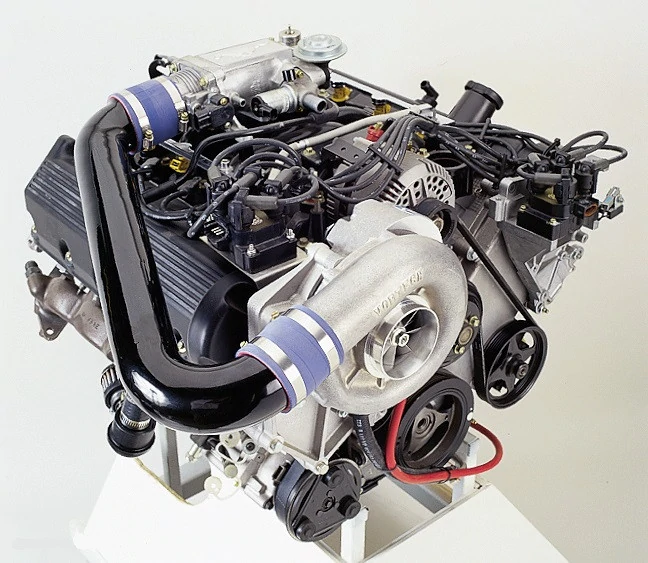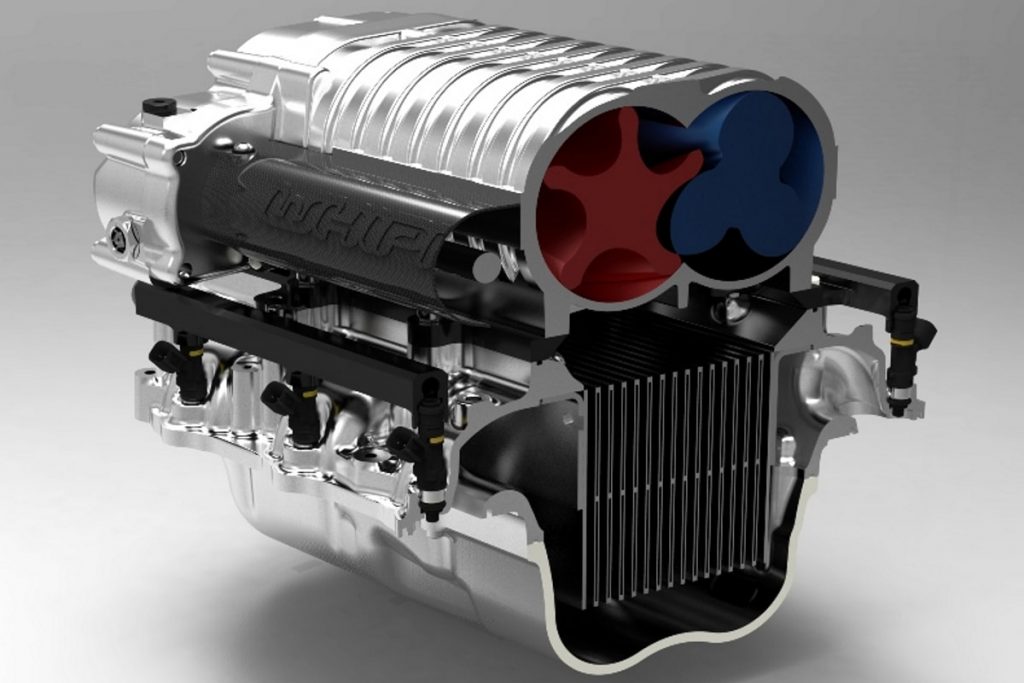Whether you’re an engineer, a speedster, or an automotive enthusiast, you’ve probably looked for ways to increase horsepower and speed. Having bigger normally aspirated engines with more cylinders certainly works to increase horsepower, but a more powerful engine is also heavier and costs more in gas and maintenance.
Table of Contents
Enter the supercharger, which is designed to make your engine more effective by bringing more air into the combustion cylinder. More oxygen in the chamber ignites more fuel, adding a significant horsepower boost.
In this quick guide, you’ll get the answers to “what is a supercharger?” and "how much HP does a supercharger add?".
What Is A Supercharger?
For an engine to produce power, it needs to burn fuel. For fuel to burn, it needs to mix with air – otherwise, it’s not flammable. Burning the mixture in the combustion chamber allows more fuel to enter. Then, pumping more air into the engine intake results in a bigger boom in which more fuel is burned faster.
Adding extra air is where the supercharger comes in. The device increases the amount of oxygen put into the engine, typically by compressing the air to beat atmospheric pressure. A supercharger compresses or pressurizes the air by spinning rapidly, usually around 50,000 to 65,000 rpm.
That many rotations per minute give off 6 to 9 psi more than the atmospheric pressure (depending on the altitude from sea level), which is how the engine’s power is increased.
Turbochargers vs. Superchargers
To get one question out of the way, the turbocharger (or turbo) has the same function as a supercharger: to put more air in the chamber. Both devices got their names from “turbo-supercharger.” What sets them apart is how they are powered. The crankshaft powers the supercharger while exhaust gas powers the turbo.
How Much Horsepower Do You Get?
Because the supercharger is powered by the crankshaft and adds air only as much as the combustion chamber can take, it’s technically an extension of your engine. This means that supercharging cannot provide a fixed amount of hp – it only adds more power in relation to your car’s original hp. The average amount added by a supercharger kit is 46% of your car’s hp. Your actual increased hp may fall in the range of 30-50%, depending on the performance of your engine.
You can’t really be sure of how much horsepower you’ll get unless you’re sure of the type of supercharger (roots, centrifugal, or twin screw), the quality and installation of the product, and the operation and maintenance of the car.
Benefits Of Supercharging
The main reason and benefit people get superchargers is horsepower. If you don’t have the luxury to get a new car with a bigger engine (which applies to most people), a supercharger is a practical and direct upgrade to your engine’s horsepower.
When choosing between superchargers and turbos, throttle response is what sets them apart. “Turbo lag” refers to the relatively small but significant amount of time between stepping on the gas and the turbocharger’s response. Because the engine itself mechanically drives a supercharger, it doesn’t need to take time to power up with exhaust gases.

Types Of Superchargers
There are many different kinds of superchargers. Continue reading to learn the benefits and disadvantages to different types of superchargers.
Roots-type
Named after the Roots brothers, this design started in the 1860s as an air pump used to put more air in an industrial blast furnace. Roots superchargers are more of an air pump than a compressor because their simple design comes with two rotors that rapidly spin to throw air directly into the combustion chamber. Unlike the other types of superchargers, this one has no compression housing.
Because the air is pumped straight into the engine, roots superchargers produce a lot of heat, making them less efficient than the other types. However, thanks to its simple design, this supercharger has fewer moving parts to worry about – making it sturdy, reliable, and low-maintenance.
Centrifugal
Similar to how a turbo works, centrifugal superchargers are designed to slow down airflow in a compression chamber, resulting in positive boost pressure exiting the modification.
Unlike the roots and twin-screw superchargers, centrifugal superchargers are dynamic compressors, meaning their rpm is exponentially increased depending on your engine’s rpm. This is because the centrifugal supercharger is not directly spun by a belt connected to the crankshaft. Instead, the crankshaft spins a pulley that spins a reduction gear that causes the supercharger’s impeller to rotate even faster than your engine.
This type’s disadvantage is that it is not as efficient as the other types when used with a low-rpm build.
Twin-Screw
You could say the twin-screw design is a combination of roots-type superchargers and centrifugal superchargers – think of a roots-type that also compresses air. This type reduces the volume along the length of the twin rotors that compress the air before entering the engine.
A twin-screw has the main advantages of the types mentioned earlier of superchargers. A full boost comes faster even at low engine speeds, like the roots-type. The twin-screw also takes the element of thermal efficiency by slowing the air down like the centrifugal.
The only drawback comes down to the design’s cost and complexity.

Can You Put 2 Superchargers On A Car?
Twin-Charging: Turbo vs. Supercharger
Using two superchargers, two turbos, or one of each type is called twin-charging. This method is most commonly done with one turbo and one supercharger because they don’t use the same power source.
Turbos work very efficiently in tandem because they both use exhaust gases, which are also produced by having two turbochargers. However, twin superchargers may not be as efficient because superchargers run on engine power, meaning they take some of the power they make. Though it’s possible to have two superchargers, it may dramatically decrease fuel economy. They are also typically heavier than turbos.
Supercharger Heat And Intercooler Basics
Twin-supercharging is generally uncommon because of how much heat just one supercharger generates. Having two of them will likely damage an engine without a big intercooler.
Air heats up when you compress or pressurize it. Hot air doesn’t expand as much during combustion because it is less dense than cooler air. To maximize the potential of a supercharger, you need to cool some of the air before it enters the chamber.
Enter the intercooler, a device that pumps cooler air or water through a series of tubes or pipes running through the engine. The air coming from a supercharger cools down when it meets the cooling system. It then becomes denser air that burns better in the combustion chamber.
Overall, putting two superchargers on a car is likely counterproductive unless you have an engine specifically designed for that. Technically, you can have two superchargers if you have more than one motor.
Can You Turn A Supercharger On And Off?
The short answer is no. The conventional supercharger takes the place of the air intake leading to the combustion chamber – disabling it means you may not get air in the engine. Because the engine’s crankshaft directly powers a supercharger, the only real way to turn a supercharger off is to turn your car off.

Frequently Asked Questions
How Much Horsepower Does A Supercharger Add To A V8?
It depends on your engine and the type of supercharger you get. The Magnuson supercharger, for example, provides a 6 psi boost, which translates to a 110 horsepower boost for a 6.2 L v8. It also adds around 100 lb-ft of torque.
How Much Horsepower Does A Supercharger Add To An LS Engine?
With the right configurations, a 4.8 L LS engine with a Vortech supercharger can produce 438 horsepower at some 7,000 rpm and 351 lb-ft torque at around 5,800 rpm.
How Much HP Does A Whipple Supercharger Add?
Attached to a Mustang GT, a Whipple supercharger can add at least 300 more horsepower. Depending on the rest of the engine modifications, tune, and fuel economy, the Whipple supercharger can add up to a hefty 1,200 hp.
What Brand Of Supercharger Should I Get?
Below are some brands you may want to consider if you want to get started with supercharging your car:
- Whipple
- Magnuson
- Powerdyne
- Roush
- Vortech
- Toyota Racing Development (TRD)
Conclusion
Supercharging your engine is a relatively inexpensive way to get a horsepower boost without dismantling your normally aspirated engines and fitting your car with new parts. When comparing a supercharger to a turbo, both offer the same efficiency element, but the mechanical supercharger remains the cheaper alternative to turbocharging.
If you’re in the market for a cost-efficient upgrade to your car’s horsepower, consider adding a supercharger kit. Whether or not you’re new to car modding, it helps to take your time to understand the ins and outs of supercharging your car and maximizing efficiency and fuel economy.
Be sure to know what type you’re getting, what your car can handle, and how much you want to spend. Before adding anything to your car, remember to do your homework and follow our guide!
